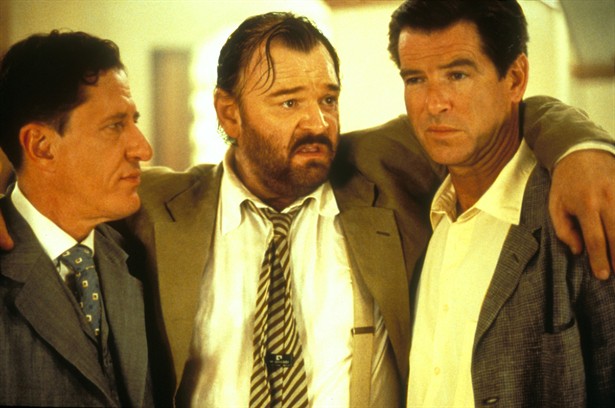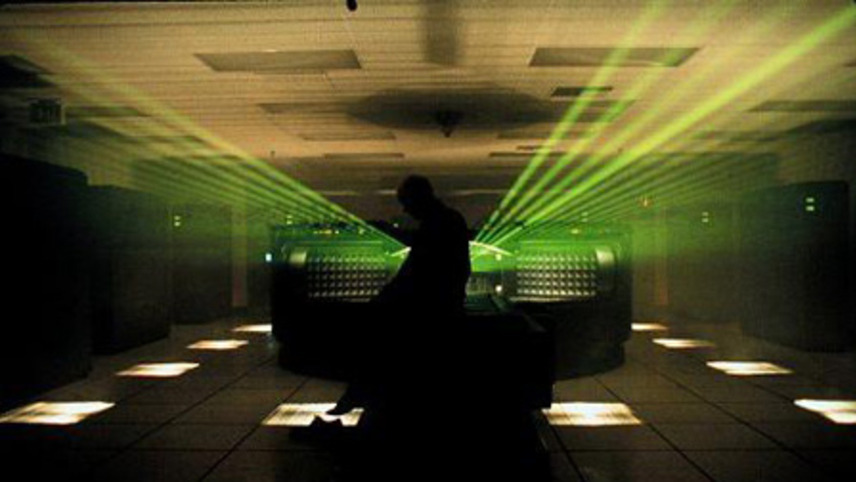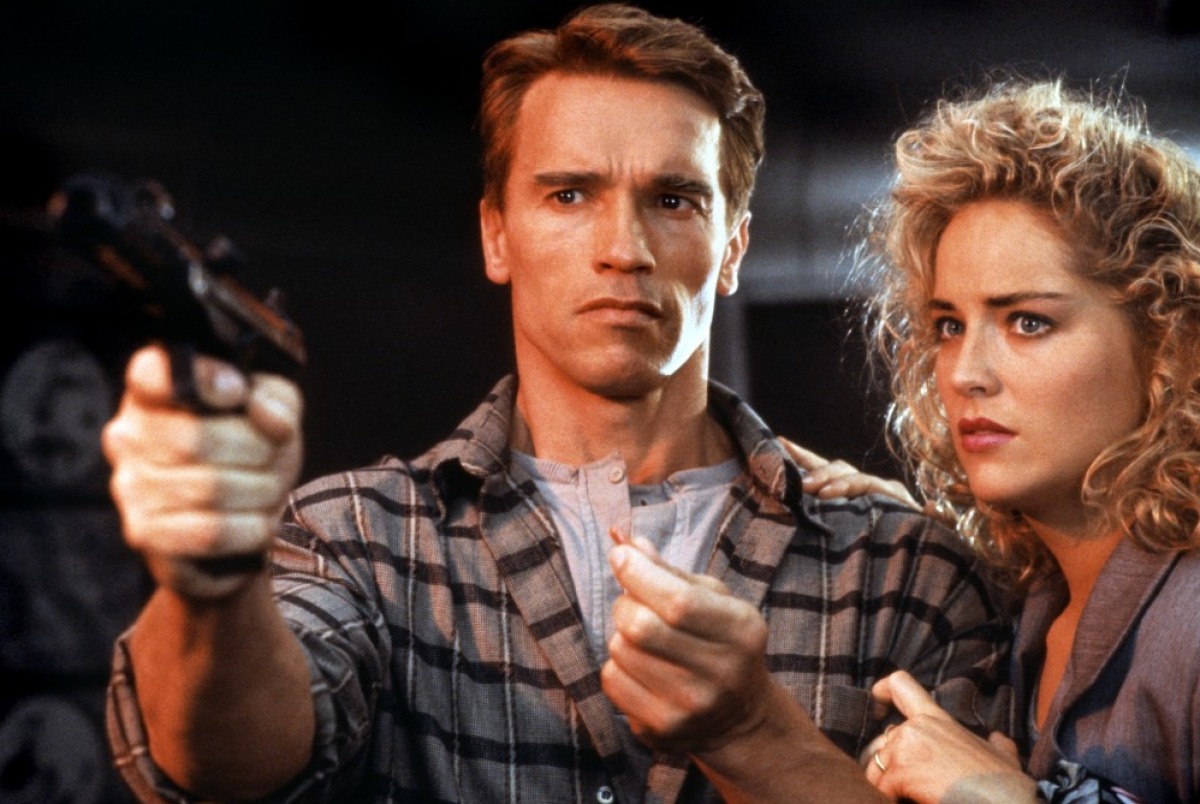8. The Tailor of Panama (2001, John Boorman)

It all comes down to what are willing to do just to have a peace of mind. Some decide that it is best to work with the ones who seem stronger and more advantageous allies. Others are more interested in what’s just. Many are in between, one minute here, and the next minute there. These are not the players of a conspiracy game, however. A conspiracy game is played by those who have more control over what’s going on.
On one side, we have those benefiting from the conspiracy. On the other, we have those benefiting from its dissolution. A move in this game is not made by the observable players. Isn’t it the same in chess? The pawn doesn’t move by itself. Moves are made by those who control pawns.
Therefore, to be able to understand what’s going on we mustn’t look at what’s going on or what’s visible. We must try to uncover what’s hidden from our eyes and ears. We mustn’t accept answers that make us feel good immediately, because these will change nothing. They are manufactured just to get us out of the way.
As it is portrayed in this movie, what’s wrong is actually obvious and there for everyone to see. You can only miss it if you don’t care. These days those who craft conspiracies and overthrow governments are dumber than ever. So, everything is out there. We don’t even need the WikiLeaks anymore. We would need such thing if more people cared for one another. Now that the ideal human prototype has arrived, those who are interested in creating conspiracies became much more reckless.
This new human being is stupefied by consuming more data than he/she can understand, herded by sheep looking for a next fix whether it be a product he/she can buy or sell. We are dumber than ever. We are so superficial that we exchange Google findings (“Is google Making Us Stupid?” Nicholas Carr) or bits or pieces of our broken lives as information. You don’t have to watch the cat videos anymore. You are the cat… without the grace.
When one day the whereabouts of a superhero or the place we will pick for the next holiday become less important than the fate of a stranger, we will wake up to a new and better world.
9. The Thirteenth Floor (1999, Josef Rusnak)

Well, I can hear you screaming “Enough with the Ancient Greek philosophy, man!” What can I say? Let this be an opportunity to rediscover these gems. For some reason, I value them more than my Greek pals here. This movie reminds me of the intriguing discussion that takes place in Plato’s The Sophist (360 BC).
There are two parties fighting for your attention here. One proposes that only things that can be perceived by our senses is real, while the other argues reality cannot be limited to immediately available things. Then, they talk about daredevils moving around in a storm for they see it as a good example.
Finally, the one who claims the existence of beings that cannot be known by using senses convinces the other by stating that “Since daredevils cannot move by themselves, there must be an invisible agent that moves them.” In such a short time he convinces the other, but no matter how hard we try we cannot see a valid argument there.
Because of its nature, this part of the passage is seen problematic by many philosophers. Not by John M. Berry, obviously. He claims that the opposing parties mentioned in the dialogue both accept the proof as valid, because they both have the same notion of reality regardless of their seemingly alternate positions.
They both believe that “being is nothing but efficient interactions among entities” (Self Interest in the Tripartite Soul Argument in Plato’s Republic, John M. Berry, 1979). Therefore, there is nothing to know beyond the world of agents, entities and the interactions between them.
In this movie, a simulated world is created for research and possibly for entertainment. As we watch the movie, we realize that those who created this imaginary world were seduced by it and fell victims to their very earthly desires.
However, the wife of one of these scientists, Jane Fuller falls in love with the avatar of his husband who is a better man. Her love for the avatar in this dream world turns it into a real person. This is exactly Berry’s answer to the claim that being is nothing but efficient interactions. That we are our relationships and the meaning of our existence is created by us on a day-to-day basis.
That’s not the same as the post-modernist claim, however. This is its opposite. Perhaps, now it’s all clear to you why Heidegger named his masterpiece Being and Time (1927) when he set out to describe what being meant for us, humans.
10. Total Recall (1990, Paul Verhoeven)

This movie builds upon one’s dissatisfaction with his life thinking he was meant for more important things. Douglas is tempted when he learns about trips you can take in your mind that feel pretty much like the real thing. In this case, imaginary worlds are ways to escape from everyday life. Before our hopes and dreams become labyrinths we cannot escape from, we must realize that dreaming is also the natural way to create new notions of reality and a desirable future for us.
As Einstein once said “creativity (or dreaming up stuff) is more important than intelligence.” So, the main problem here is not dreaming, but the inability to differentiate between the tool (dreaming) and the master (dreamer). Because of our strong desires, we may very easily be reduced to tools to maintain our own dreams.
At one point, when he was questioned by a doctor in Mars, Douglas has a hard time deciding whether he is real. Then, he decides that he is, because the doctor seems to be scared of what he might do otherwise (if he thought he wasn’t real).
Another interesting aspect of the movie were the clues left behind for Douglas by himself with an alternate personality, so that he could uncover who he really was. As you can see, any story with a well-hidden meaning and an easily accessible superficial meaning can be crafted to help or to manipulate you. To be able crack conspiracies, you must be able to think like the thief or the murderer.
There are two ways to create puzzles and as a result, two ways to crack them. You can either use symbolism or you can enhance the temporal effect of your creation.
Let’s pick symbolism first, because every conspiracy inevitably is built with symbols. Otherwise they cannot be easily created or consumed, for a man/woman is a pattern seeking animal. And, patterns are nothing but a group of symbols that have become associated with each other because of a particular reason. Once you know what a symbol stands for and how it relates to the other symbols, you can easily decrypt the whole system.
Think about the TV Shows created for people with limited intelligence where the good guy has a certain way and a bad guy has the opposite of that. For example, a good guy may have a pointed chin with a good attitude and the bad guy may have hygiene problems and smoke a lot. Interestingly enough, the latter was the stereotype of the good guy when I was a little kid. If you are curious, just check out old examples of film noir.
The other technique is a lit bit harder to understand. We have to go through with it, however. Because it is as important as the first one. It will be the technique used by those who create conspiracies to help you out. Although examples for this are more common in the East, it isn’t uniquely eastern. For example, Andrei Tarkovsky used rain as a tool in his movie Nostalgia (1983). That’s the scene where Gorchakov visits Domenico.
The rain wasn’t a symbol and it didn’t have a meaning in itself. However, as you watched the rain during the course of this long take, it transformed you from a spectator into a participator. You got the feeling of being there. And, by that feeling you could see things otherwise you wouldn’t. At first Domenico seemed crazy, but towards the end of the scene you would argue otherwise.
When put together, the first method can be used for understanding what’s going on right now (state of the union) and the second method is the compass that will prevent you from losing your way (having a feeling that something’s wrong without an explanation). Because when your mind becomes preoccupied with puzzles all the time (using the first method all the time), it is very easy to get lost in one of them.
If you are living in the midst of conspiracies, you can be sure of one thing, that you don’t have a clue. Because you are cut off from every information source. Also, you don’t have the means to understand the dots, let alone connect them. What can you do in such a situation? Take me for example, when I find myself in such a situation, I accept at the very beginning that I know nothing and I have no clue.
Then, I just watch what people are willing to do when they face dangerous situations with little or no chance of success. What they are willing to do will show you the caliber of human beings in that environment which in return will show you whether you are living in a dream world or not. If the human beings are not living diminished lives, then this world is real. Otherwise, it isn’t. It’s that simple.
When there are still people who are not worried about consequences of a moral action and disregard what they’ll gain or lose in the process, “it’s not fear that grips [you]… only a heightened sense of things. The cold air in [your] lungs. Windswept pines moving against the coming night (300, Zack Snyder, 2007).”
Author Bio: Erol Bozkurt is a computer scientist who specializes in analysis, quality assurance and management. He is interested in movies with alternate meanings, because that’s what software developers do all the time, play with the meanings of things. Right now, he is living in Istanbul, Turkey and working as a consultant.